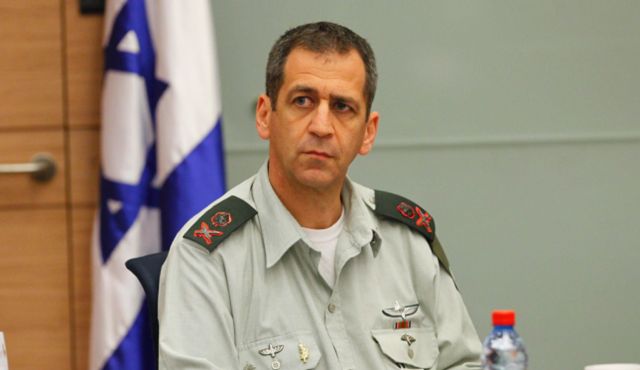
The Israel Defense Forces’ Intelligence Directorate is using artificial intelligence technology to generate the same number of targets in a month that it once took a year to produce, IDF Chief of Staff, Lt. Gen. Aviv Kochavi revealed on Sunday.
Kochavi, speaking at a conference organized by the Military Intelligence Directorate’s Gazit Institute, said that the Targets Center, established by the directorate in March 2019, has become a significant force multiplier.
“It takes all of our existing advanced sensors and sources—we almost didn’t have to build new sensors—and connected these abilities to advanced artificial intelligence,” said Kochavi. “The result is that the number of [potential enemy] targets we identified per year, we now produce in a month or two, depending on the arena,” he stated. “The significance of this for strategy is enormous.”
In Syria, for example, such intelligence has been matched with precision firepower to severely disrupt Iranian plans to build a war machine against Israel.
Instead of Syria hosting tens of thousands of Iranian-backed militias, a “Hezbollah 2.0” in the Syrian Golan region, and a hub of surface-to-surface and surface-to-air missiles—three goals that were set by the late Iranian Quds Force commander Qassem Soleimani—a majority of efforts to this end have been foiled, the chief of staff said.
“Eighty percent of the Iranian smuggling routes to Syria via sea, land and air have been closed,” Kochavi added, referring to Israel’s campaign to disrupt Iranian entrenchment.
The partnership between “great intelligence and great technology” produced such results, he added.
He described the result as “the ability to hit a building in the heart of a crowded city, not in Gaza but in the north, to know what floor the ammunition is stored on in a seven-story building, which stays standing after it is hit and no noncombatants are hurt, and lots of the ammunition is destroyed.”
Such strikes occur once every two to three weeks, and sometimes once a week, greatly shaping Israel’s strategy against northern security threats.
“This new strategy will also be relevant to the future Third Lebanon War—or the First Northern War—when we use intelligence and technology shaped for these sectors and reach new achievements,” said Kochavi. “This, therefore, is the connection between intelligence, technology and strategy.”
Kochavi dedicated much of his speech to the triangle of intelligence, technology and strategy, arguing that this linkage “has never been stronger. This connection is only getting stronger and we have no choice but to strengthen it,” he said.
Political and military leaders have always needed intelligence to set policies whether on the battlefield or elsewhere, said Kochavi, defining strategy as the definition of a state’s interests and objectives and the techniques needed to reach these objectives.
Ultimately, methods used to pursue national strategies are either political or military, he said, and “in our reality, in recent years, strategy has increasingly been based on activating military force.”
The Gaza Strip, he said, forms the clearest example of this trend.
“the current reality of Gaza continues as it is until May, we will be able to say that these have been two of the quietest and most stable years that southern Israel and Gaza have experienced. That is a result of a strategy whose central plank is the use of force,” said Kochavi.
Operations “Black Belt” (against Palestinian Islamic Jihad in November 2019), “Guardian of the Walls” (against Hamas and Palestinian Islamic Jihad in May 2021) and “Breaking Dawn” (against PIJ in August 2022) have produced a reality in which “Hamas is not only not responding to our attacks, it’s not even thinking of responding,” the general said. “This is mainly because of the activation of force.”
The use of precise intelligence and firepower technology also leads to what Kochavi described as the lowest combatant-to-civilian casualty ratio in the world in recent Gaza conflicts, 1:2, which he said compared with 1:7 in other conflicts fought by Western militaries.
The use of long-range precision firepower prevents casualties among the Israeli military by reducing the need for bloody maneuvers while also decreasing civilian casualties on the other side, he said.
“Low casualties enable international and local legitimacy and for us to align with our own values. We do not need international legitimacy or any formal institution or other organizations to remind us that we have to fight those that we need to hit, and not those that we do not,” said the chief of staff.
Wars of the 21st century will be based on intelligence and technology, and on creating gaps between “what we did to the enemy and what the enemy does to us. It is these gaps that cause PIJ head [Ziyad] Nakhalah to order a stop to hostilities,” said Kochavi, referring to the three-day aerial conflict that Israel fought with PIJ in August.
“All of this holds true for [ground operations] too. One day, when these go into full force, the maneuvers will have to achieve a very high level of destruction based on intelligence and technology, and be highly defended [from enemy attacks],” he said.
“The key phrase we use is ‘eliminating capabilities,’” said Kochavi, adding that removing enemy capabilities and targeting “centers of gravity” among the enemy at a high rate is the central pillar of the IDF’s operational logic. JNS











